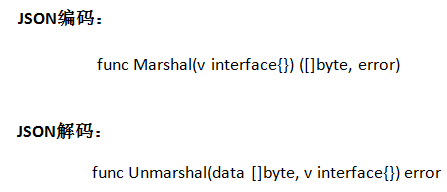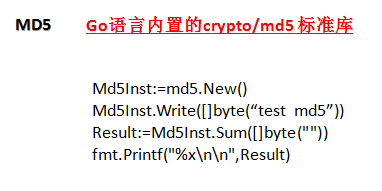社区微信群开通啦,扫一扫抢先加入社区官方微信群

社区微信群
社区微信群开通啦,扫一扫抢先加入社区官方微信群

社区微信群


package main
import (
"fmt"
"time"
)
func test_Routine() {
fmt.Println("This is one routine!!!")
}
func Add(x, y int) {
z := x + y
fmt.Println(z)
}
func main() {
for i := 1; i < 10; i++ {
go Add(i, i)
}
time.Sleep(2)
}



package main
import (
"fmt"
"strconv"
)
func Add(x, y int, quit chan int) {
z := x + y
fmt.Println(z)
quit <- 1
}
func Read(ch chan int) {
value := <-ch
fmt.Println("value:" + strconv.Itoa(value))
}
func Write(ch chan int) {
//ch <- 10
}
func main() {
//ch := make(chan int)
//go Read(ch)
//go Write(ch)
//time.Sleep(10)
//fmt.Println("end of code")
chs := make([]chan int, 10)
for i := 0; i < 10; i++ {
chs[i] = make(chan int)
go Add(i, i, chs[i])
}
for _, v := range chs {
<-v
}
}


package main
import (
"fmt"
"time"
)
var ch chan int
func test_channel() {
ch <- 1
fmt.Println("ch 1")
ch <- 1
fmt.Println("ch 2")
ch <- 1
fmt.Println("come to end goroutine 1")
}
func main() {
ch = make(chan int, 0) // 等价于 ch = make(chan int) 都是不带缓冲的channel
ch = make(chan int, 2) // 是带缓冲的channel
go test_channel()
time.Sleep(2 * time.Second)
fmt.Println("running end!")
<-ch
time.Sleep(time.Second)
}

package main
import (
"fmt"
"time"
)
func main() {
ch := make(chan int)
go func(ch chan int) {
ch <- 1
}(ch)
time.Sleep(time.Second)
select {
case <-ch:
fmt.Print("come to read ch!")
default:
fmt.Print("come to default!")
}
}
package main
import (
"fmt"
"time"
)
func main() {
ch := make(chan int)
timeout := make(chan int, 1)
go func() {
time.Sleep(time.Second)
timeout <- 1
}()
select {
case <-ch:
fmt.Print("come to read ch!")
case <-timeout:
fmt.Print("come to timeout!")
}
fmt.Print("end of code!")
}
package main
import (
"fmt"
"time"
)
func main() {
ch := make(chan int)
select {
case <-ch:
fmt.Print("come to read ch!")
case <-time.After(time.Second):
fmt.Print("come to timeout!")
}
fmt.Print("end of code!")
}
package main
import (
"fmt"
"runtime"
"strconv"
"time"
)
func main() {
//协程1
go func() {
for i := 1; i < 100; i++ {
if i == 10 {
//主动出让cpu 使用的话 需要 导入 runtime包
runtime.Gosched()
}
fmt.Println("routine 1:" + strconv.Itoa(i))
}
}()
//协程2
go func() {
for i := 100; i < 200; i++ {
fmt.Println("routine 2:" + strconv.Itoa(i))
}
}()
time.Sleep(time.Second)
}
package main
import (
"fmt"
"strconv"
"time"
)
var ch chan int
func main() {
ch = make(chan int)
//协程1
go func() {
for i := 1; i < 100; i++ {
if i == 10 {
//遇到了阻塞
<-ch
}
fmt.Println("routine 1:" + strconv.Itoa(i))
}
}()
//协程2
go func() {
for i := 100; i < 200; i++ {
fmt.Println("routine 2:" + strconv.Itoa(i))
}
ch <- 1
}()
time.Sleep(time.Second)
}
协程 默认不会主动让出执行权,即一个协程执行完后才会让出cpu 让另外的协程执行。除非以下两种情况协程让出cpu



package main
import (
"encoding/json"
"fmt"
)
type Student struct {
Name string `json:"student_name"`
Age int
}
func main() {
//对数组类型的json编码
x := [5]int{1, 2, 3, 4, 5}
s, err := json.Marshal(x)
if err != nil {
panic(err)
}
fmt.Println(string(s))
//对map类型进行json编码
m := make(map[string]float64)
m["zhangsan"] = 100.4
s2, err2 := json.Marshal(m)
if err2 != nil {
panic(err2)
}
fmt.Println(string(s2))
//对对象进行json编码
student := Student{"zhangsan", 26}
s3, err3 := json.Marshal(student)
if err3 != nil {
panic(err3)
}
fmt.Println(string(s3))
//对s3进行json解码
var s4 interface{}
json.Unmarshal([]byte(s3), &s4)
fmt.Printf("%v", s4)
}

package main
import (
"crypto/md5"
"fmt"
)
func main() {
Md5Inst := md5.New()
Md5Inst.Write([]byte("zhangsan"))
Result := Md5Inst.Sum([]byte(""))
fmt.Printf("%xnn", Result)
}
package main
import (
//"fmt"
"net/http"
)
func main() {
http.HandleFunc("/hello", func(w http.ResponseWriter, r *http.Request) {
w.Write([]byte("hello beifeng!"))
})
http.ListenAndServe("127.0.0.1:8080", nil)
}


该方法用于在指定的 TCP 网络地址 addr 进行监听,然后调用服务端处理程序来处理传入的连 接请求。该方法有两个参数:第一个参数 addr 即监听地址;第二个参数表示服务端处理程序, 通常为空,这意味着服务端调用 http.DefaultServeMux 进行处理,而服务端编写的业务逻 辑处理程序 http.Handle() 或 http.HandleFunc() 默认注入 http.DefaultServeMux 中

http.HandleFunc()方法接受两个参数
第一个参数是HTTP请求的 目标路径"/hello",该参数值可以是字符串,也可以是字符串形式的正则表达式
第二个参数指定具体的回调方法,比如helloHandler。
当我们的程序运行起来后,访问http://localhost:8080/hello , 程序就会去调用helloHandler()方法中的业务逻辑程序
http.HandleFunc("/hello", func(w http.ResponseWriter, r *http.Request) {
w.Write([]byte(“hello beifeng!”))
})
resp, err:=http.Get(“.....”)
defer resp.Body.Close()
body,err:=ioutil.ReadAll(resp.Body)
fmt.Println(string(body))
package main
import (
"fmt"
"io/ioutil"
"net/http"
"strings"
)
func main() {
resp, err := http.Post("http://www.baidu.com", "application/x-www-form-urlencoded", strings.NewReader("id=1"))
if err != nil {
panic(err)
}
defer resp.Body.Close()
body, err := ioutil.ReadAll(resp.Body)
fmt.Println(string(body))
}
![]()
. 匹配除换行符以外的任意字符
w 匹配字母或数字或下划线或汉字
s 匹配任意的空白符
d 匹配数字
b 匹配单词的开始或结束
^ 匹配字符串的开始
$ 匹配字符串的结束
* 重复零次或更多次
+ 重复一次或更多次
? 重复零次或一次
{n} 重复n次
{n,} 重复n次或更多次
{n,m} 重复n到m次
捕获 (exp) 匹配exp,并捕获文本到自动命名的组里
(?<name>exp) 匹配exp,并捕获文本到名称为name的组里,也可以写成(?'name'exp)
(?:exp) 匹配exp,不捕获匹配的文本,也不给此分组分配组号

package main
import (
"fmt"
"regexp"
)
func main() {
//reg := regexp.MustCompile("\w+") 正则表达式中的需要转义
reg := regexp.MustCompile(`^z.*l$`)
result := reg.FindAllString("zhangsanl", -1)
fmt.Printf("%vn", result)
reg1 := regexp.MustCompile(`^z(.*)l$`)
result1 := reg1.FindAllString("zhangsand", -1)
fmt.Printf("%vn", result1)
reg2 := regexp.MustCompile(`^z(.{1})(.{1})(.*)l$`)
result2 := reg2.FindAllStringSubmatch("zhangsanl", -1)
fmt.Printf("%vn", result2)
}
package main
import (
"fmt"
"io/ioutil"
"net/http"
"regexp"
)
func main() {
url := "https://movie.douban.com/subject/24751763/"
resp, err := http.Get(url)
if err != nil {
panic(err)
}
defer resp.Body.Close()
sHtml, _ := ioutil.ReadAll(resp.Body)
reg := regexp.MustCompile(`<spans*property="v:itemreviewed">(.*)</span>`)
result := reg.FindAllStringSubmatch(string(sHtml), -1)
fmt.Println(result[0][1])
reg1 := regexp.MustCompile(`<strongs*class="lls*rating_num"s*property="v:average">(.*)</strong>`)
result1 := reg1.FindAllStringSubmatch(string(sHtml), -1)
fmt.Println(result1[0][1])
}
如果觉得我的文章对您有用,请随意打赏。你的支持将鼓励我继续创作!
